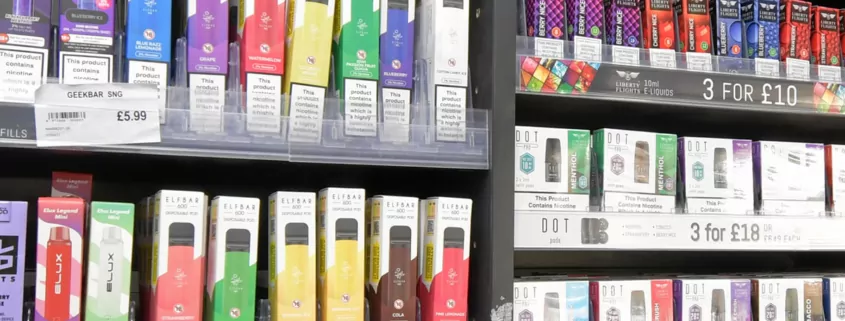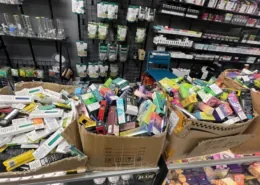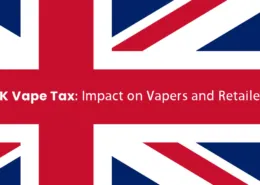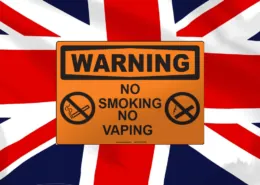Will the UK’s Disposable Vape Ban Actually Work?
The United Kingdom has taken a decisive and widely publicized step to address the “nasty” issue of single-use e-cigarettes. As of June 1, 2025, a nationwide ban on the sale and supply of disposable vapes is officially in force. The government’s stated aims are clear: to tackle the “alarming rise in youth vaping” and to curb the significant environmental damage caused by millions of these devices being discarded weekly. When the ban was announced in October 2024, Circular Economy Minister Mary Creagh described disposables as “extremely wasteful” and a “blight on our towns and cities.” But as the ban takes effect, a critical question emerges: will it actually work? Early indications from retailers, consumers, and public health experts suggest the reality is complex, with a market already adapting in ways that may undermine the ban’s core objectives.
The New Rules: What’s Legal and What’s Not?
The legislation is designed to eliminate products intended for short-term use and disposal. From June 1st, for a vape to be legally sold in the UK, it must be rechargeable, refillable, and have a replaceable coil (if it uses one). This means businesses caught selling or supplying single-use vapes face penalties, starting with a £200 fine from Trading Standards and escalating to unlimited fines or even prison sentences for repeat offenders. The ban applies to all disposable vapes, including nicotine-free versions, and covers both in-store and online sales.
However, the vaping industry has been quick to adapt. Retailers are already stocking their shelves with a new generation of “compliant” devices. These are often rechargeable and use pre-filled, replaceable pods. They look and feel remarkably similar to the disposables they are replacing and are often sold at a comparable price point. This has led to skepticism about whether the ban will truly change consumer behavior.
Consumer and Retailer Perspectives: Will Anything Really Change?
On the ground, many believe the ban will have a limited impact. In Crawley, West Sussex, a regular customer at a vape-focused convenience store, 19-year-old Emily, expressed a common sentiment: “One hundred per cent it’s not going to change anything. The ban’s not going to work.” She pointed to the new rechargeable alternatives on the shelves, which a sales assistant enthusiastically confirmed would be legal after the ban. The concern is that consumers, particularly those accustomed to the convenience of disposables, will simply buy these new rechargeable vapes and not bother to recharge them, effectively treating them as single-use devices. “Instead of charging it, people will throw it in the bin, use it as a disposable,” Emily predicted. “It’s not going to stop the kids. If the kids are going to vape or smoke, they’re going to vape or smoke.”
Her friend Vanessa, a 35-year-old mother of four who switched from smoking to disposable vapes three years ago, agreed. “I won’t lie to you. On my kitchen side, I must have about 40 vapes. I don’t think the ban is really going to change behaviour,” she said. While trying a new refillable version of her preferred brand, she noted she wasn’t “getting the same full flavour by putting replacement pods in,” highlighting a potential barrier to a satisfying transition for some users.
In the lead-up to the ban, many high street sellers offered cut-price deals to clear their disposable stock, with some vapers stockpiling dozens of devices. This behavior suggests a strong attachment to the existing products and a reluctance to change habits.
Confusion and the Black Market: The Unintended Consequences
A significant challenge emerging is the considerable confusion among some retailers about what is and isn’t compliant under the new law. The subtle differences between a banned disposable and a legal reusable pod system can be hard to spot. In an informal investigation, two “big puff” vapes (a Lost Mary BM6000 and an IVG 2400 4 in 1) were purchased from shops in Brighton where staff claimed they would be legal after the ban. However, when taken to a specialist vape shop, Evapo, they were identified as non-compliant. The legal versions, which Evapo sold for a slightly higher price, had almost identical packaging but featured key differences, such as a USB charging port on the IVG model and a replaceable mouthpiece containing the coil on the Lost Mary model.
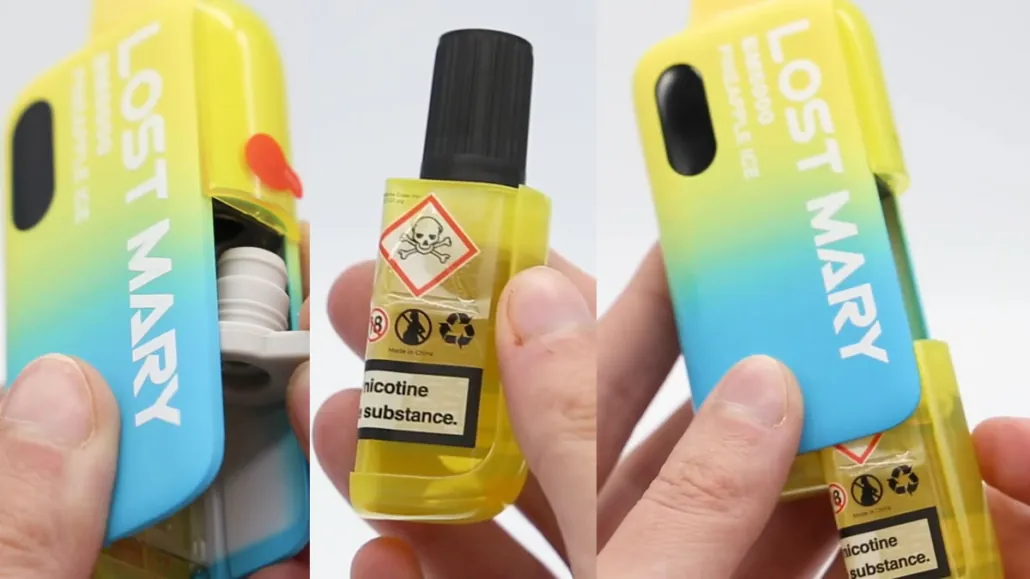
Richard Begg, head of learning and development for the specialist vape shop VPZ, believes many illegal vapes will remain on shelves because sellers either don’t understand or will choose to ignore the new rules. He also predicts the rise of a “massive black market” for disposables sold under the counter. “You’ve got to remember the amount of money that’s in this disposable industry. Trading Standards are really up against it. The basic fine is £200, it needs to be at least £10,000,” he argued, suggesting the initial penalty is too low to be an effective deterrent for a lucrative illicit trade.
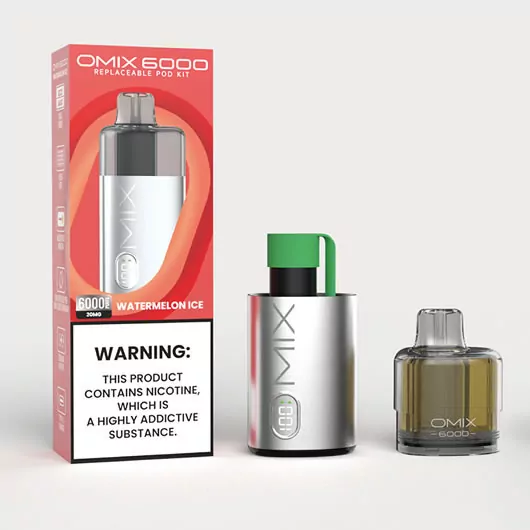
Ecigator OMIX 6000 (2+10ml) Pod Kit
The Ecigator OMIX 6000 is designed to be replaceable and rechargeable, and the ariflow is adjustable.
The kit comes with a 2ml prefilled pod and a 10ml E-liquid container, delivering up to 6000 puffs.
With the mesh coil technology, the OMIX 6000 will produces a consistent pure taste to ensure a superior vaping experience.
The Public Health Angle: Will the Ban Curb Youth Vaping?
The UK vaping industry has boomed over the past decade, partly supported by public health bodies like Public Health England and the NHS, which have promoted vapes as a vastly less harmful alternative for adult smokers. However, the widespread arrival of cheap, convenient disposables in 2021 led to a surge in youth vaping, with 2024 figures from Action on Smoking and Health (ASH) showing around 18% of 11 to 17-year-olds had tried vaping.
Hazel Cheeseman, chief executive of ASH, described the ban as a “useful first step,” but questioned whether it alone would achieve the goals of cutting youth vaping and environmental waste. “I think it is possible it may not achieve either goal on its own,” she said. “The government is going to need to use other powers in order to make a reality of that.”
Cheeseman argues that the “disposable” factor wasn’t the core reason for their appeal to children. “It wasn’t because they were disposable. It was because they were brightly coloured and they were really visible in a point of sale display, really easy to use and really cheap, and all of those things remain true of the new products on the market.”
She believes the government will need to utilize the powers granted within the broader Tobacco and Vapes Bill, which passed the Commons in March and is progressing through the House of Lords. This bill includes provisions to restrict vape advertising, sponsorship, packaging, and in-store displays. “Once sellers have to comply with rules about point-of-sale display and stuff, lots of places will just stop selling them,” she predicted, suggesting that these further regulations will be more impactful than the disposable ban alone.
The government faces a “tricky balancing act,” according to Cheeseman. It must not make vaping products so unappealing or difficult to access that they are no longer used by adults to quit smoking, while simultaneously depressing teen use. Some retailers, like Bakht Amin at the IT Repair Centre in Crawley, are already opting out. He is selling off his remaining disposable vape stock and will stop selling vapes altogether from June 1st, citing “too much competition” and a desire not to have his young children see him selling these products.
Conclusion: A Step in the Right Direction, But Not a Silver Bullet
The UK’s ban on disposable vapes is a decisive and necessary response to clear environmental and youth public health concerns. However, its effectiveness as a standalone measure remains uncertain. Early evidence suggests that while it may shift the market towards reusable products, it might not significantly reduce overall vaping prevalence without further action. The success of this policy will hinge on robust enforcement to combat the inevitable rise of a black market and clear communication to both retailers and consumers about what is compliant. Ultimately, the ban on disposables is likely just the first major step in a longer journey of regulatory reform. The real test will be how the government uses the additional powers in the Tobacco and Vapes Bill to address the core drivers of youth appeal – flavors, marketing, and retail visibility – while preserving a viable, less harmful alternative for adult smokers who wish to quit.
- Malaysia Negeri Sembilan Backs Vape Ban, Awaits Clear Laws - August 5, 2025
- Is It Illegal to Vape or Smoke While Driving in Massachusetts? - August 5, 2025
- Austria Plans to Ban Disposable E-Cigarettes - August 5, 2025

